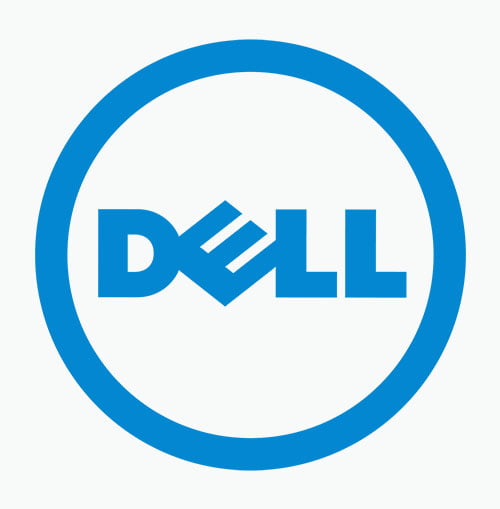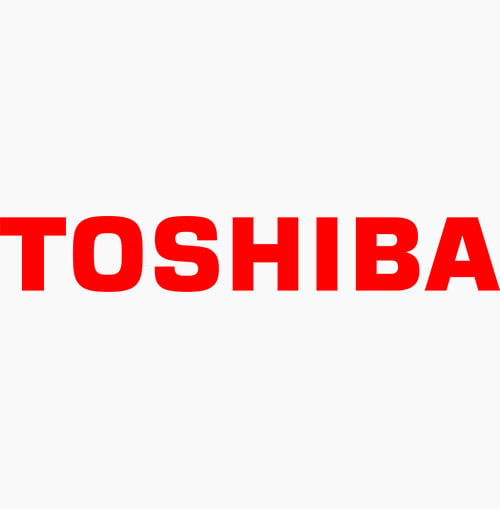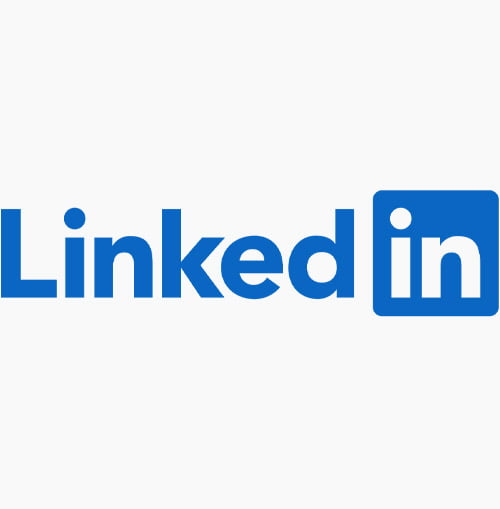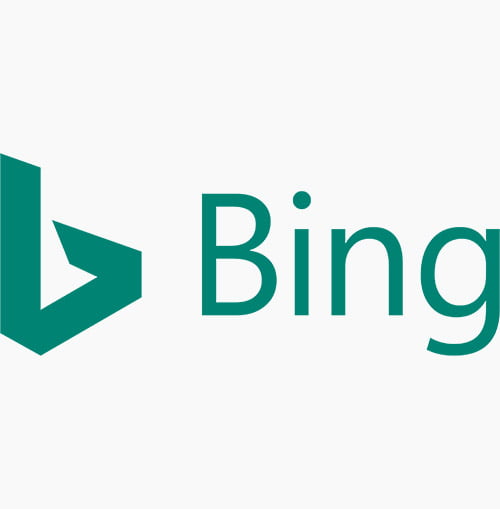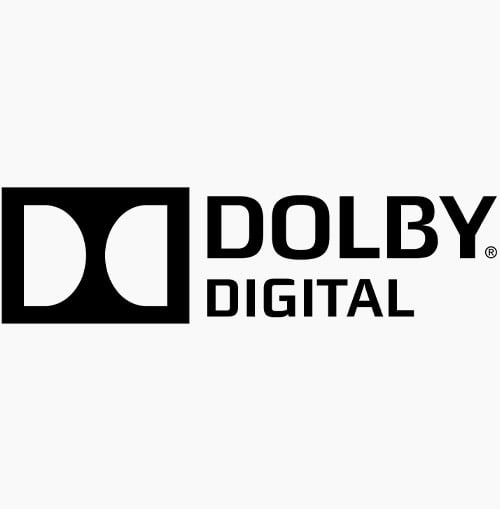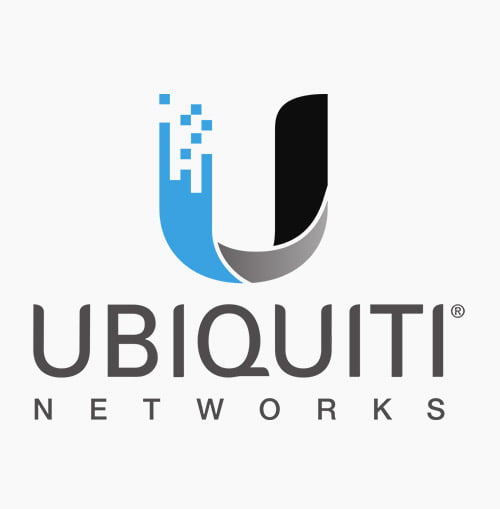1. What is SEO?
SEO, or Search Engine Optimization, is the process of optimizing a website to increase its visibility on search engine results pages (SERPs). This includes improving various elements like site structure, content, and backlinks to rank higher for relevant search queries.
2. Why is SEO important for my website?
SEO is important because it helps increase your website’s visibility in search engines, driving organic (non-paid) traffic. Higher visibility leads to more website visitors, which can ultimately increase conversions, sales, or leads for your business.
3. How does Google rank websites?
Google uses complex algorithms to rank websites based on various factors like content quality, relevance, backlinks, user experience, and technical SEO aspects. The ranking factors are continuously updated to ensure the best and most relevant content is shown to users.
4. What is the difference between SEO and SEM?
SEO (Search Engine Optimization) focuses on organic search results and improving visibility through unpaid methods, such as content optimization and link building. SEM (Search Engine Marketing) involves paid advertising (PPC), like Google Ads, to appear at the top of search results.
5. What is on-page SEO?
On-page SEO refers to the optimization of elements on a website that impact its search rankings. These include title tags, meta descriptions, headers, content, images, and internal links. It ensures that search engines can crawl and understand the content effectively.
6. What is off-page SEO?
Off-page SEO refers to optimization efforts that happen outside of your website but still influence its rankings. The primary tactic is building high-quality backlinks from authoritative websites. Social media engagement and influencer outreach are also off-page SEO factors.
7. What are backlinks, and why are they important?
Backlinks are links from other websites that direct traffic to your site. They serve as endorsements for your content. High-quality backlinks from authoritative sites are crucial for improving search engine rankings and increasing your website’s trustworthiness.
8. What is keyword research in SEO?
Keyword research is the process of identifying the words and phrases that your target audience is using to search for information related to your business. It is the foundation of SEO, as it informs your content creation, link building, and on-page optimization strategies.
9. What are long-tail keywords?
Long-tail keywords are longer, more specific phrases that users tend to search for. These keywords have lower search volume but are often easier to rank for and attract more qualified traffic because they target users with clear intent.
10. What is a meta description?
A meta description is a brief summary (up to 160 characters) of a webpage’s content that appears under the title tag in search engine results. Although it doesn’t directly impact rankings, a compelling meta description can increase click-through rates.
11. What is a title tag?
A title tag is an HTML element that specifies the title of a webpage. It appears in search engine results as the clickable headline. It plays a crucial role in SEO because it helps search engines understand the page content and impacts user engagement.
12. What is user experience (UX) in SEO?
User experience (UX) refers to how visitors interact with your website. Factors like page load time, easy navigation, mobile-friendliness, and content quality all influence UX. A positive UX can reduce bounce rates and improve rankings.
13. What is technical SEO?
Technical SEO involves optimizing the technical aspects of a website, such as site speed, mobile-friendliness, secure connection (HTTPS), and structured data. These elements help search engines crawl and index your site more efficiently, which can improve rankings.
14. What is mobile optimization in SEO?
Mobile optimization ensures that your website is fully responsive and user-friendly on mobile devices. Since Google uses mobile-first indexing, websites that are optimized for mobile perform better in search results.
15. What are the key ranking factors in SEO?
Key ranking factors in SEO include content quality, backlinks, mobile-friendliness, page speed, technical SEO, keyword optimization, user engagement, and domain authority. Google uses these factors to determine which pages are most relevant for specific search queries.
16. What is a 301 redirect?
A 301 redirect is a permanent redirect from one URL to another. It transfers the SEO value of the original page to the new page, which is important for maintaining rankings when content or pages are moved or deleted.
17. What is a 404 error?
A 404 error occurs when a webpage cannot be found on the server. Broken links, deleted pages, or incorrectly typed URLs usually cause this error. It’s important to fix 404 errors to prevent poor user experience and potential SEO issues.
18. What is schema markup?
Schema markup is a form of structured data that helps search engines understand the content on your website more accurately. It can be used to create rich snippets in search results, such as reviews, product prices, or event dates.
19. What is a sitemap in SEO?
A sitemap is a file that lists all the pages of your website, helping search engines discover and index your content. There are XML sitemaps for search engines and HTML sitemaps for users to navigate your site more easily.
20. What is CTR (Click-Through Rate)?
Click-Through Rate (CTR) is the percentage of users who click on your link after seeing it in search engine results. Higher CTRs are usually a sign of relevant and engaging content, which can positively influence SEO rankings.
21. What are anchor texts?
Anchor texts are the clickable text within a hyperlink. Optimizing anchor text with relevant keywords helps search engines understand the content of the linked page and can improve its rankings for specific keywords.
22. How does page speed affect SEO?
Page speed is a ranking factor for SEO because slow-loading websites negatively impact the user experience. Users are likely to leave if a page takes too long to load, leading to higher bounce rates and lower rankings.
23. What is link building in SEO?
Link building is the process of acquiring backlinks from other websites. It is an essential part of off-page SEO, as backlinks help establish your website’s authority and improve its ranking in search engine results.
24. What is the role of content in SEO?
Content plays a crucial role in SEO because it provides value to users and search engines. High-quality, relevant content that is optimized for keywords helps drive traffic, encourage backlinks, and improve user engagement.
25. What is duplicate content in SEO?
Duplicate content refers to content that appears in multiple places on the web, whether on your website or elsewhere. It can confuse search engines and prevent pages from ranking effectively. It’s important to manage duplicate content and use canonical tags when necessary.
26. What is content marketing in SEO?
Content marketing is the practice of creating valuable, relevant content to attract and engage your target audience. In SEO, content marketing helps drive organic traffic, build authority, and generate backlinks that improve rankings.
27. What is Google Analytics?
Google Analytics is a free web analytics tool that tracks and reports website traffic. It helps measure the effectiveness of your SEO efforts, providing insights into user behavior, traffic sources, and conversion rates.
28. What is Google Search Console?
Google Search Console is a free tool that helps you monitor and maintain your site’s presence in Google search results. It provides data on search traffic, keyword performance, crawl errors, and other SEO-related issues.
29. What is the difference between nofollow and dofollow links?
A dofollow link passes on SEO value, helping the linked page rank higher. A nofollow link, on the other hand, tells search engines not to pass any SEO value or link equity, often used for paid links or untrusted content.
30. What is domain authority?
Domain authority (DA) is a score (out of 100) that measures the strength and credibility of a website. It is influenced by factors like backlinks, content quality, and user experience, and higher DA websites tend to rank better in search results.
31. What is a 301 redirect?
A 301 redirect is a permanent redirection of one URL to another. This is commonly used when a page is moved or deleted, ensuring the link equity is transferred to the new URL, which is important for maintaining search rankings.
32. What is the Google Panda update?
Google Panda is an algorithm update designed to penalize low-quality content that doesn’t provide value to users. It rewards websites with high-quality, well-researched, and informative content.
33. What is the Google Penguin update?
The Google Penguin update targets sites using manipulative link-building practices, like buying backlinks or engaging in link farms. It aims to penalize sites with low-quality or spammy backlinks.
34. What is Google Hummingbird?
Google Hummingbird is an algorithm update that improved the search engine’s ability to understand the meaning behind search queries. It focuses on semantic search and user intent, rather than just matching keywords.
35. What is Google RankBrain?
RankBrain is a machine learning system that helps Google process search queries more effectively. It plays a key role in interpreting complex search queries and delivering the most relevant results based on user intent.
36. What is local SEO?
Local SEO focuses on optimizing your website to rank for location-based search queries. It involves tactics such as optimizing Google My Business listings, building local citations, and adding location-specific keywords to your content.
37. How do I optimize my website for local SEO?
To optimize for local SEO, you need to claim and optimize your Google My Business listing, build local citations, encourage customer reviews, and use location-based keywords in your content and meta tags.
38. What is a content audit?
A content audit is the process of evaluating the performance of your website’s content. It helps identify content gaps, outdated material, and opportunities for improvement, ensuring your content remains relevant and optimized for SEO.
39. What is a landing page in SEO?
A landing page is a webpage specifically designed to capture visitors’ attention and encourage them to take a desired action, such as filling out a form, subscribing to a newsletter, or making a purchase. Optimizing landing pages for SEO can improve conversion rates.
40. How does social media affect SEO?
While social media signals are not direct ranking factors for Google, active social media engagement can indirectly impact SEO by driving traffic to your site, increasing brand awareness, and generating backlinks from social platforms.
41. What is the importance of HTTPS in SEO?
HTTPS (HyperText Transfer Protocol Secure) is a secure version of HTTP, which encrypts the data exchanged between the website and the user. Google considers HTTPS as a ranking signal, so having an SSL certificate is important for SEO.
42. What are XML sitemaps?
XML sitemaps are files that list the pages on your website, helping search engines crawl and index your content more effectively. They ensure that all important pages are included in search results, even those that might be harder for search engines to find.
43. What are no-index tags?
A no-index tag is an HTML meta tag used to instruct search engines not to index a particular page. This is helpful for preventing low-value pages, like duplicate content or thank-you pages, from appearing in search results.
44. What is a canonical tag?
A canonical tag is an HTML link element used to indicate the preferred version of a webpage when there is duplicate content. It tells search engines which page to prioritize in search rankings.
45. What is page authority?
Page authority (PA) is a metric developed by Moz that predicts how well a specific page will rank in search engine results. It is influenced by factors like the number of backlinks and the quality of the content on the page.
46. What is bounce rate in SEO?
Bounce rate refers to the percentage of visitors who land on a page and leave without interacting further. A high bounce rate can signal poor user experience or irrelevant content, negatively affecting SEO.
47. What is the difference between white-hat and black-hat SEO?
White-hat SEO refers to ethical practices that align with search engine guidelines, such as creating high-quality content and building natural backlinks. Black-hat SEO involves unethical tactics like keyword stuffing and buying backlinks, which can lead to penalties.
48. What is a PBN (Private Blog Network)?
A PBN is a network of websites created specifically for the purpose of generating backlinks to manipulate search engine rankings. Google considers this a black-hat tactic, and using PBNs can lead to penalties.
49. What is the importance of alt text in SEO?
Alt text (alternative text) is used to describe images for search engines and users with visual impairments. It helps search engines understand the content of images and can improve your site’s ranking, especially in image searches.
50. What is keyword stuffing?
Keyword stuffing is the practice of overusing keywords in content in an unnatural way in an attempt to manipulate rankings. This can lead to penalties and poor user experience. Instead, keywords should be used naturally and strategically.
51. What is LSI (Latent Semantic Indexing) in SEO?
LSI refers to a technique used by search engines to understand the relationships between words and concepts. By including semantically related terms (synonyms and variations of your main keywords) in your content, you help search engines understand its context better.
52. How do I improve my website’s SEO performance?
Improving your SEO involves a combination of technical, on-page, and off-page strategies. This includes optimizing content for relevant keywords, ensuring fast load times, building quality backlinks, creating engaging content, and providing a good user experience.
53. What is the role of content freshness in SEO?
Search engines prefer fresh and up-to-date content because it is likely to provide the most relevant information to users. Regularly updating your content, adding new blog posts, and refreshing outdated information can help improve your rankings.
54. What are search engine algorithms?
Search engine algorithms are the complex sets of rules that search engines use to determine how to rank web pages for a given query. They consider factors like content relevance, quality, backlinks, user engagement, and many more.
55. What is a bounce rate, and how does it affect SEO?
Bounce rate is the percentage of visitors who leave your website after viewing only one page. A high bounce rate may signal to search engines that the content is not relevant or engaging, which can negatively impact SEO.
56. How do I track my SEO progress?
You can track SEO progress using tools like Google Analytics, Google Search Console, SEMrush, or Ahrefs. These tools allow you to monitor keyword rankings, organic traffic, bounce rates, conversions, and other key SEO metrics.
57. What is a 502 Bad Gateway error?
A 502 Bad Gateway error occurs when a server receives an invalid response from another server. This can prevent search engines from crawling and indexing your site properly, potentially affecting SEO performance.
58. What are rich snippets?
Rich snippets are enhanced search results that display additional information, such as star ratings, product prices, or event dates. These are generated from structured data (schema markup) and can increase your visibility and CTR.
59. What is SEO content writing?
SEO content writing is the process of creating written content that is both valuable to the audience and optimized for search engines. This includes using relevant keywords, writing compelling meta descriptions, and ensuring readability and user engagement.
60. What is Google My Business (GMB) and how does it help SEO?
Google My Business (GMB) is a free tool that allows businesses to manage their online presence on Google, including appearing in local search results and Google Maps. Optimizing your GMB profile improves local SEO and helps attract nearby customers.
61. What is the difference between organic SEO and paid SEO?
Organic SEO involves strategies to improve rankings without paying for ads, such as optimizing content, building backlinks, and improving site structure. Paid SEO, or paid search advertising (PPC), involves paying for ads to appear on search engines, such as Google Ads.
62. What is an SEO audit?
An SEO audit is a comprehensive evaluation of a website’s performance, identifying areas for improvement in technical SEO, content, backlinks, and user experience. Audits help ensure your website is optimized for both search engines and users.
63. What is a search intent in SEO?
Search intent refers to the reason behind a user’s search query. It can be informational, navigational, transactional, or commercial. Understanding search intent is essential for creating content that aligns with what users are looking for.
64. What is a 404 page, and how does it affect SEO?
A 404 page is displayed when a user tries to access a webpage that no longer exists. Too many 404 errors can harm the user experience and affect SEO, as search engines may penalize websites with broken links.
65. What are canonical URLs in SEO?
A canonical URL is the preferred version of a webpage when multiple pages have similar content. It helps search engines understand which version to index and can prevent duplicate content issues.
66. How important is website structure for SEO?
Website structure plays a critical role in SEO because it affects how easily search engines can crawl and index your content. A well-structured site with clear navigation, internal linking, and optimized URL hierarchy helps improve rankings.
67. What is a Google penalty?
A Google penalty is a negative impact on a website’s rankings due to violating Google’s guidelines. This can happen from practices like keyword stuffing, using low-quality backlinks, or engaging in black-hat SEO tactics.
68. What are SEO-friendly URLs?
SEO-friendly URLs are clean, descriptive, and easy to read. They include relevant keywords and avoid unnecessary characters or complex strings of numbers. For example, “example.com/seo-services” is better than “example.com/page123.”
69. What is content duplication and how does it affect SEO?
Content duplication occurs when the same or very similar content appears on multiple pages, either on your own website or elsewhere. Search engines may struggle to determine the best version to rank, which can result in penalties or reduced rankings.
70. What is a local citation in SEO?
A local citation is any online mention of your business’s name, address, and phone number (NAP). It helps search engines verify the legitimacy of your business and can improve local SEO rankings.
71. What is the role of social signals in SEO?
Social signals refer to the likes, shares, comments, and mentions that your content receives on social media platforms. While not a direct ranking factor for Google, social signals can drive traffic to your site and indirectly influence SEO.
72. What is SEO copywriting?
SEO copywriting is the art of writing content that is optimized for both search engines and readers. It involves incorporating relevant keywords naturally, writing compelling headlines, and ensuring the content is engaging and valuable to the target audience.
73. What is keyword density in SEO?
Keyword density is the percentage of times a keyword appears in a text compared to the total number of words. While it’s important to use keywords effectively, keyword stuffing can harm SEO. Aim for a natural and contextually relevant keyword density.
74. What is keyword cannibalization in SEO?
Keyword cannibalization occurs when multiple pages on your website target the same keyword or search query. This can confuse search engines, leading to a dilution of rankings. It’s essential to ensure each page has its unique target keywords.
75. What is a PBN (Private Blog Network) in SEO?
A Private Blog Network (PBN) is a network of websites created specifically for the purpose of building backlinks to manipulate search engine rankings. Google considers this a black-hat SEO tactic and can penalize websites involved in PBNs.
76. What are Google’s E-A-T guidelines?
E-A-T stands for Expertise, Authoritativeness, and Trustworthiness. Google uses these factors to assess the quality of content and the credibility of websites. Websites that demonstrate high levels of E-A-T are more likely to rank well in search results.
77. What are Google’s Quality Guidelines?
Google’s Quality Guidelines provide a set of best practices that websites should follow to ensure their content and SEO strategies align with Google’s standards. Following these guidelines helps websites avoid penalties and improve their chances of ranking.
78. What is the significance of user engagement for SEO?
User engagement factors like time on site, pages per session, and bounce rate can signal to search engines how valuable and relevant your content is. Engaged users are more likely to convert, which improves your SEO performance.
79. What is SEO for eCommerce websites?
SEO for eCommerce websites involves optimizing product pages, category pages, and overall site structure to rank higher in search results. Key tactics include optimizing product descriptions, using rich snippets, building quality backlinks, and improving site speed.
80. How do I prevent SEO mistakes on my website?
To prevent SEO mistakes, ensure that your website is technically sound, your content is optimized for relevant keywords, and you follow Google’s guidelines. Regular SEO audits, updating old content, and avoiding black-hat practices will also help prevent mistakes.
81. How can I optimize my website for voice search?
To optimize for voice search, focus on using natural language and conversational keywords. Ensure your website is mobile-friendly, loads quickly, and answers common questions concisely. Structured data can also help with voice search optimization.
82. What is the difference between indexed and non-indexed pages?
Indexed pages are those that search engines have crawled and included in their database, meaning they can appear in search results. Non-indexed pages are not included in the search engine index, often because they are blocked by robots.txt or noindex tags.
83. What is a content delivery network (CDN) and how does it affect SEO?
A Content Delivery Network (CDN) is a system of distributed servers that deliver web content to users based on their geographic location. Using a CDN can improve site speed, especially for global audiences, which indirectly benefits SEO.
84. What is domain authority, and how is it calculated?
Domain Authority (DA) is a metric created by Moz that predicts how well a website will rank in search results. It is calculated based on factors such as backlinks, age, and content quality. Higher DA scores typically correlate with better SEO performance.
85. What is the difference between SEO and SEM?
SEO (Search Engine Optimization) focuses on improving organic search rankings, while SEM (Search Engine Marketing) encompasses both organic and paid search efforts, including PPC advertising campaigns, to drive traffic to your website.
86. What is the role of backlinks in SEO?
Backlinks are links from other websites that point to your content. Search engines view backlinks as a vote of confidence, signaling that your content is valuable and relevant. High-quality, authoritative backlinks can significantly boost your rankings.
87. How do I find relevant keywords for my website?
To find relevant keywords, you can use tools like Google Keyword Planner, Ahrefs, SEMrush, or Ubersuggest. Look for keywords that have a good search volume, low competition, and relevance to your audience and business.
88. What is a link-building strategy?
A link-building strategy involves acquiring high-quality backlinks to your website. Methods include guest blogging, creating shareable content, building relationships with influencers, and participating in industry forums and communities.
89. What is structured data in SEO?
Structured data is a standardized format for providing information about a page and its content. It uses schema markup to help search engines understand the context of the content, which can improve visibility and enable rich snippets.
90. How do I avoid duplicate content issues?
To avoid duplicate content, make sure that each page on your website has unique content. Use canonical tags to indicate preferred versions of pages and avoid copying content from other sites or republishing the same content across multiple pages.
91. What are the best practices for mobile SEO?
Mobile SEO best practices include ensuring a responsive design, optimizing page load speed, using mobile-friendly navigation, and making sure content is easily readable on smaller screens.
92. What are backlinks and how do they help SEO?
Backlinks are links from other websites to your pages. They are a major ranking factor, as search engines see them as an endorsement of your content. The more authoritative the linking site, the more beneficial the backlink for your SEO.
93. How does the PageRank algorithm work?
PageRank is a Google algorithm that ranks web pages based on the quantity and quality of backlinks. Pages with more high-quality backlinks are seen as more authoritative and are ranked higher in search results.
94. What is a 301 redirect?
A 301 redirect is a permanent redirection from one URL to another. It is important for SEO as it helps preserve the ranking of the old page while directing visitors and search engines to the new page.
95. How do I improve my website's loading speed for SEO?
Improving loading speed involves optimizing images, minifying CSS and JavaScript files, leveraging browser caching, and using a content delivery network (CDN). Faster websites offer a better user experience and are favored by search engines.
96. How does SSL affect SEO?
SSL (Secure Sockets Layer) encrypts data between a website and its visitors. Google uses SSL as a ranking factor, so having HTTPS on your site can positively impact your SEO and security.
97. What is the importance of content length in SEO?
Longer content tends to perform better in search rankings because it can provide more value, cover topics in-depth, and attract more backlinks. However, quality and relevance always take precedence over sheer length.
98. What is the impact of SEO on user experience (UX)?
SEO directly affects user experience by improving website performance, speed, mobile responsiveness, and content quality. A good user experience can lead to more engagement and longer visits, which positively affects SEO.
99. How do I optimize my website for featured snippets?
To optimize for featured snippets, focus on answering common questions concisely in your content. Use structured data, include relevant keywords, and format your content using bullet points, numbered lists, or tables.
100. What is a backlink audit?
A backlink audit involves evaluating the quality of the backlinks pointing to your website. It helps identify toxic backlinks that could harm your SEO and provides an opportunity to disavow low-quality links and improve your backlink profile.



















